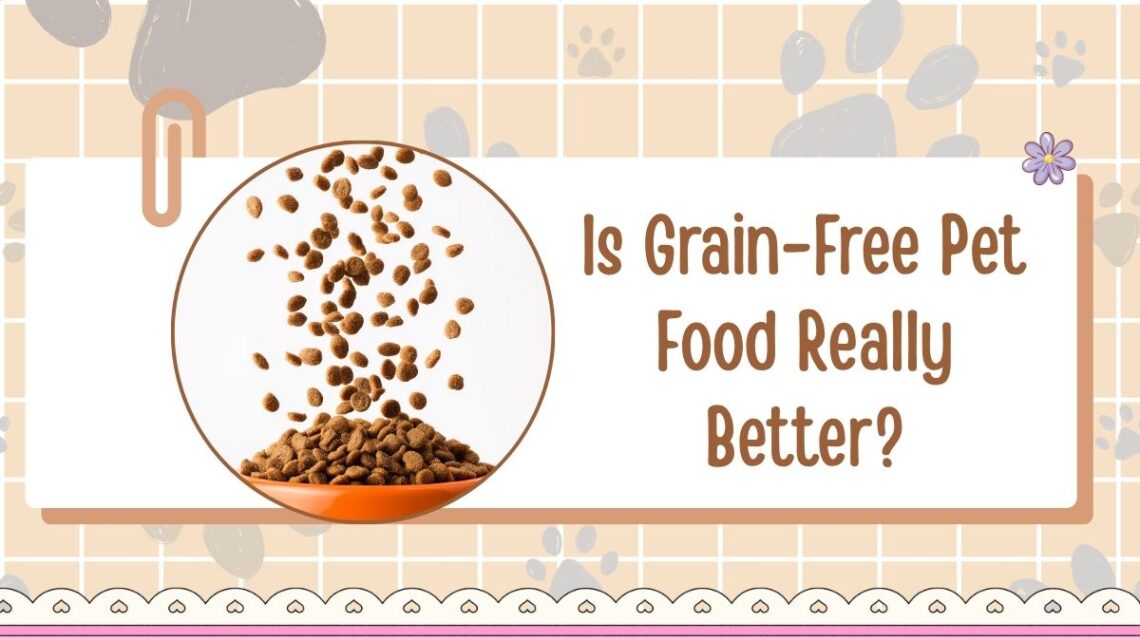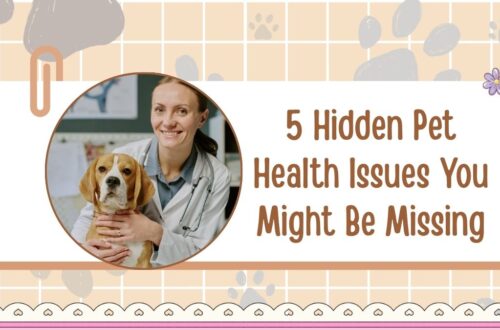Choosing the right food for your furry friend can feel overwhelming — especially with brands promising “premium,” “natural,” or “grain-free” benefits.
Over the last few years, grain-free pet food has become one of the fastest-growing trends in the pet industry. Pet parents are drawn to claims that it’s healthier, easier to digest, and closer to what pets’ wild ancestors ate.
But is grain-free really better for dogs and cats? Let’s explore the facts, science, and realities behind the label.
What Does “Grain-Free” Mean?
Grain-free pet food means that the recipe contains no wheat, corn, rice, oats, barley, or other grains. Instead, it replaces these with alternative carbohydrate sources such as peas, lentils, chickpeas, sweet potatoes, or potatoes.
Manufacturers often market these diets as:
- More “natural” or “ancestral”
- Easier to digest
- Free from fillers or allergens
However, these claims don’t always hold true for every pet. Understanding what grain-free means — and what it doesn’t — is key to making the best choice.
How the Grain-Free Trend Started
The rise of grain-free diets began around 2010, when human health trends like “gluten-free” and “paleo” influenced the pet food industry. Many owners assumed if grains weren’t good for them, they must not be good for their pets either.
Pet food brands quickly responded, releasing hundreds of grain-free products labeled as premium, limited-ingredient, or hypoallergenic. Today, nearly half of all specialty pet foods sold in the U.S. and Canada are grain-free or contain alternative carbohydrates.
But popularity doesn’t always equal proof.
Are Grains Really Bad for Pets?
Contrary to popular belief, most dogs and cats can safely and efficiently digest grains. Grains provide essential nutrients, including:
- Complex carbohydrates for steady energy
- Fiber for healthy digestion
- Protein (especially from rice and oats)
- Vitamins and minerals such as B-vitamins, magnesium, and iron
The myth that grains are “fillers” isn’t accurate — high-quality grains contribute to a balanced diet. In fact, true grain allergies are extremely rare in pets. Most food allergies are linked to proteins like beef, chicken, or dairy rather than grains.
Health Risks Linked to Grain-Free Diets
While many grain-free diets are well-formulated, some have raised nutritional red flags in recent years. Here’s what studies and veterinary observations have highlighted:
- Heart Health Concerns (DCM):
Some dogs fed certain grain-free diets — especially those heavy in peas, lentils, or potatoes — developed a heart condition known as dilated cardiomyopathy (DCM). This condition weakens the heart muscle and can lead to heart failure. - Imbalanced Nutrients:
When grains are removed, other ingredients must replace them for proper balance. Some grain-free diets may have low taurine, methionine, or cysteine levels, all essential for heart and muscle health. - Digestibility Issues:
Some pets experience softer stools or gas due to the higher legume or starch content found in grain-free recipes. - Overcompensation with Protein:
Certain grain-free foods add excessive protein or fat to appear “premium,” which may strain kidneys in older pets or those with underlying issues.
When Grain-Free Might Be Beneficial
Grain-free diets aren’t inherently bad. In some cases, they’re a valuable option, especially when tailored to specific needs:
- Confirmed grain allergy or intolerance: Diagnosed by a veterinarian after elimination trials.
- Pets with digestive disorders: Some pets benefit from alternative carbs like potatoes or peas if they struggle with wheat or corn.
- Pet owners preferring specific formulas: Some prefer diets with novel ingredients or higher meat content.
If your pet thrives on a grain-free diet under vet supervision, there’s no reason to change. The key is ensuring the formula is complete, balanced, and vet-approved.
Grain-Free vs. Grain-Inclusive Diets — A Comparison
| Feature | Grain-Inclusive Diets | Grain-Free Diets |
|---|---|---|
| Main Carbohydrate Source | Rice, oats, barley, wheat | Peas, lentils, chickpeas, potatoes |
| Nutritional Value | Well-studied, balanced with proven digestibility | Can be nutritionally balanced if formulated correctly |
| Allergy Suitability | Suitable for most pets; true grain allergies are rare | Helpful for pets with diagnosed grain sensitivities |
| Cost | Generally lower | Typically more expensive |
| Potential Risks | Few; balanced if made properly | Linked in some cases to DCM and nutrient imbalances |
| Long-Term Data | Decades of research and safety | Limited long-term evidence |
The Science Behind Grain-Free Nutrition
Grain-free diets usually rely on legumes and tubers for carbohydrates. While these ingredients are nutritious, they can alter amino acid balance and digestion.
- Amino Acids: Dogs need specific amino acids such as taurine and methionine. If legumes replace grains but the formula lacks adequate animal protein, taurine levels may fall — impacting heart health.
- Fiber Content: High legume levels increase fiber, which can affect the absorption of certain minerals like zinc and iron.
- Protein Sources: Not all protein is equal. Some plant proteins are less digestible, which means pets may absorb fewer essential nutrients even if the label looks adequate.
How to Know If Grain-Free Is Right for Your Dog
- Check for Allergies or Sensitivities:
If your dog shows chronic itching, ear infections, or digestive issues, ask your vet to conduct an elimination diet. - Review the Ingredient List:
Look for animal protein (chicken, salmon, lamb) as the first ingredient. Avoid formulas where peas, lentils, or potatoes dominate the top five ingredients. - Watch for Heart Symptoms:
Lethargy, coughing, or rapid breathing may indicate DCM — seek veterinary attention immediately. - Consider Breed Predispositions:
Certain breeds (Golden Retrievers, Cocker Spaniels, Dobermans) are genetically more prone to heart disease and may need extra caution with grain-free diets.
Grain-Free Diets for Cats — Are They Better?
Cats are obligate carnivores, meaning they require high levels of animal protein and specific nutrients (like taurine) that plants can’t provide.
While cats can digest some carbohydrates, they don’t need them in large amounts. This is why many owners think grain-free must be better for cats. However, not all grain-free foods are high in meat — some simply replace grains with legumes.
Well-balanced cat diets should:
- Contain 60–70% animal protein
- Have adequate taurine levels
- Avoid excessive starches from potatoes or peas
A grain-inclusive formula with proper meat content can be just as healthy — and sometimes better — than a grain-free option with too many plant substitutes.
How to Choose the Right Pet Food
When selecting a diet, whether grain-free or not, focus on nutrition, not marketing. Here’s a checklist:
- Complete and Balanced Statement: Ensure the food meets AAFCO or local nutrient standards.
- Protein Quality: Animal protein should be the main ingredient.
- Carbohydrate Type: Balanced levels — not excessive legumes or starch.
- Life Stage Match: Choose food labeled for your pet’s age (puppy, adult, senior).
- Brand Transparency: Select companies that perform feeding trials and publish nutrient analyses.
What Veterinarians Recommend
Most veterinarians advise against switching to grain-free unless your pet has a medical reason to do so. The majority of dogs and cats thrive on balanced diets that include grains.
A veterinarian may suggest grain-free food only if:
- A confirmed allergy exists
- Digestive upset improves on grain-free trials
- A specialized formulation is necessary for another condition
For pets with existing heart or kidney issues, supervision is crucial before choosing any restrictive diet.
Quick Reference: Key Facts About Grain-Free Diets
| Category | Information |
|---|---|
| Purpose | Eliminates grains, replaces with alternative carbs |
| Potential Benefits | May help in rare cases of grain allergy or intolerance |
| Main Concern | Possible nutrient deficiency and link to heart disease (DCM) |
| Typical Cost Difference | 20–30% higher than grain-inclusive foods |
| Ideal For | Pets with confirmed grain sensitivities |
| Not Ideal For | Healthy pets with no dietary issues |
| Vet Supervision Recommended | Always, especially for long-term feeding |
So, is grain-free pet food really better?
The answer depends on your individual pet. For most healthy dogs and cats, grain-inclusive diets are perfectly safe and nutritionally sound.
Grain-free formulas can be beneficial for pets with confirmed allergies, but they’re not automatically superior — and in some cases, they pose greater risks if not properly balanced.
What truly matters is nutritional quality, ingredient balance, and veterinary guidance. Whether your pet eats grains or not, ensuring complete nutrition will always be the best formula for a long, healthy, tail-wagging life.
FAQs
Not always. However, certain formulations — especially those heavy in peas, lentils, or potatoes — have been linked to nutrient imbalances. Always consult your vet before long-term use.
Not necessarily. Cats need high protein from animal sources. Grain-free doesn’t always mean more meat, so choose diets based on composition rather than the label.
If switching diets, mix 25% new food with 75% old food for the first three days, gradually increasing over 7–10 days to avoid stomach upset.




